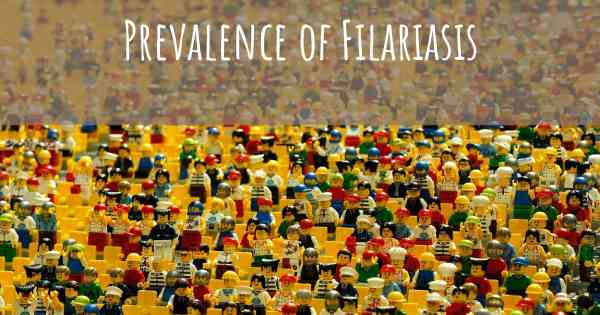18
What is the prevalence of Filariasis?
How many people does Filariasis affect? Does it have the same prevalence in men and women? And in the different countries?

Filariasis, also known as elephantiasis, is a neglected tropical disease caused by parasitic worms transmitted through mosquito bites. It affects over 120 million people in 72 countries worldwide, primarily in tropical and subtropical regions. The **prevalence** of filariasis varies across different regions, with the highest burden found in Africa, Asia, and the Pacific. It is estimated that around 40 million people suffer from severe symptoms, including disfigurement and disability. Efforts to control and eliminate filariasis have been made through mass drug administration and mosquito control programs, aiming to reduce the **prevalence** of this debilitating disease.
Filariasis, also known as elephantiasis, is a neglected tropical disease caused by parasitic worms transmitted through mosquito bites. It is prevalent in tropical and subtropical regions, particularly in Africa, Asia, the Pacific Islands, and parts of Central and South America. The World Health Organization estimates that over 120 million people worldwide are currently infected with filariasis, with approximately 40 million suffering from disfiguring and disabling symptoms.
The prevalence of filariasis varies within and between countries, with certain regions experiencing higher transmission rates due to factors such as poor sanitation, inadequate healthcare infrastructure, and limited access to preventive measures. In some areas, the disease is endemic, meaning it is consistently present and affects a significant proportion of the population.
Efforts to control and eliminate filariasis have been ongoing, with mass drug administration campaigns being a key strategy. These campaigns involve distributing preventive medication to at-risk populations to reduce the number of parasites in the community and prevent transmission. Additionally, mosquito control measures, such as insecticide-treated bed nets and environmental management, play a crucial role in reducing the prevalence of filariasis.
Addressing the prevalence of filariasis requires a comprehensive approach that includes preventive measures, early diagnosis, and access to appropriate treatment. Collaboration between governments, healthcare organizations, and communities is essential to effectively combat this debilitating disease and improve the quality of life for those affected.
Diseasemaps








